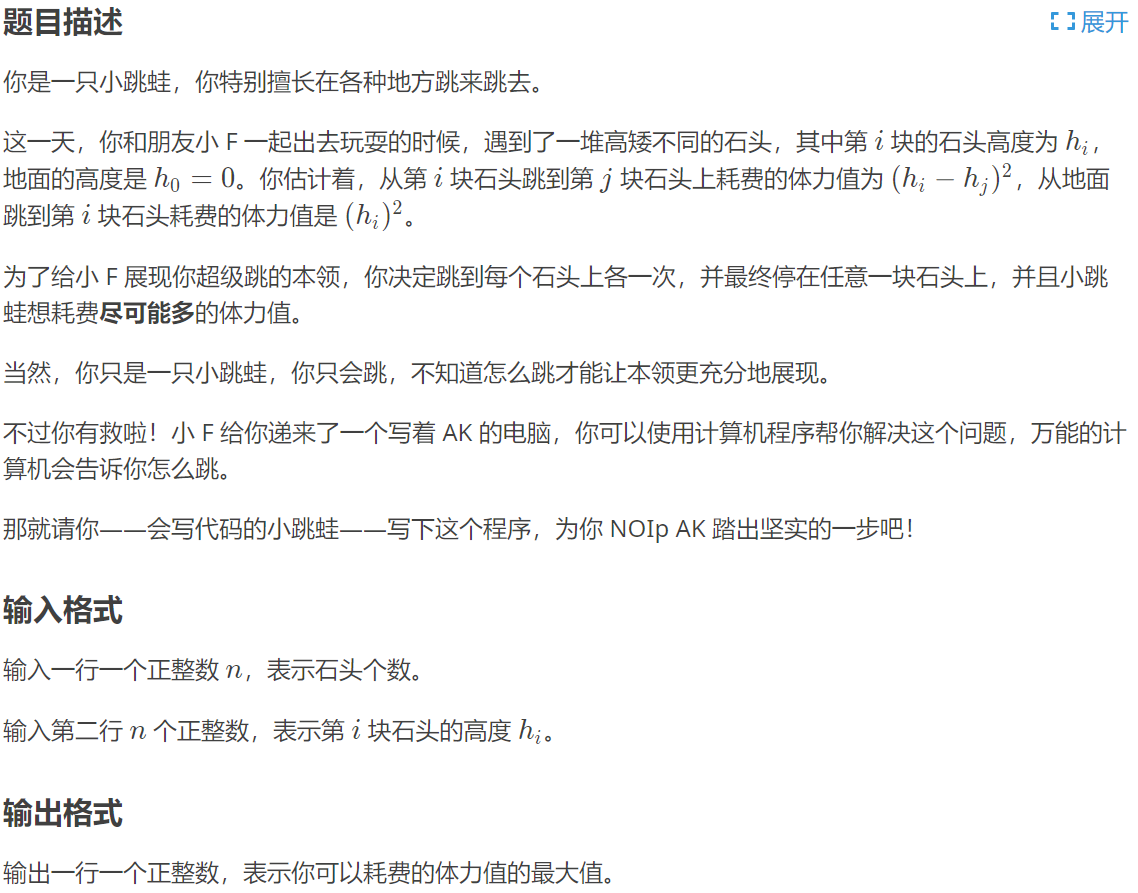比较直白的贪心.

结论是每次跳跃都选择高度差最大的石头.给出粗略证明.
首先,把地面看成高度为0的石头,将所有石头按照高度升序排列为:
0, h1, h2, h3, ... , hn 则对于:
第一次跳跃,起点为0,终点为hi(1<=i<=n),最大值为(hn-0)2
第二次跳跃,起点非0,终点为1~n,最大值为(hn-h1)2
第三次跳跃,对于所有可能的起点和终点,可能的最大值为(hn-1-h2)2
...
并且以上所有最大值可同时取得.则有让你在排序后的石头之上反复横跳的策略.
实际上这只是在依靠直觉,具体的证明是需要摆出式子来的.见此题解
#include <algorithm> #include <cstdio> #include <cstring> #include <iostream> using namespace std; int n, h[310]; long long ans; int main() { cin >> n; h[0] = 0; for(int i = 1; i <= n; i++) cin >> h[i]; sort(h, h + n + 1); int pos = -1, head = 0, end = n; while(n--) { ans += (h[end] - h[head]) * (h[end] - h[head]); if(pos == -1) head++; else end--; pos *= -1; } printf("%lld", ans); return 0; }